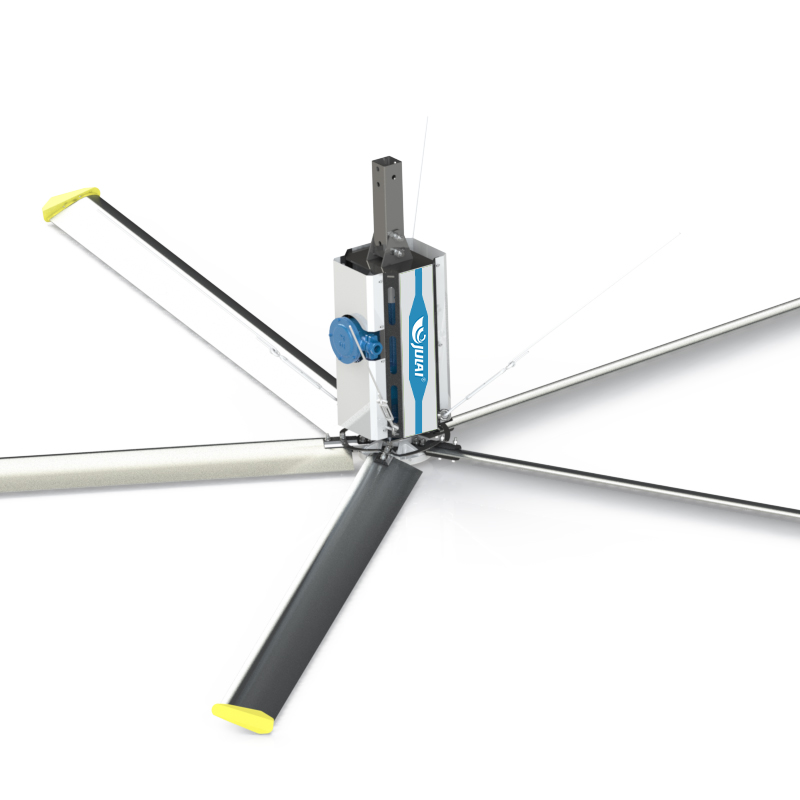The Industrial Fans is installed on the top of the beam, does not take up floor space, is safe and convenient, and can help solve environmental problems such as ventilation, cooling, dehumidification and mildew prevention in various space occasions. These are not only all the functions of Industrial Fans, but also come with energy-saving functions. Under the current "power rationing" storm, energy conservation and consumption reduction are particularly important.

First of all, one of the energy-saving advantages of
Industrial Ceiling Fan is reflected in power consumption. An Industrial Fans can cover a maximum area of 2,000 square meters and rotate at only a few percent of the motor's power output. It consumes about 1 kilowatt hour of electricity per hour, but the low power consumption produces huge airflow and saves energy. Compared with central air conditioners, air coolers and other equipment, it consumes less electricity per hour, has low electricity bills, is low-carbon, environmentally friendly and pollution-free.
The second benefit of Industrial Ceiling Fan energy saving is that it can improve cooling efficiency. In summer, the air conditioning temperature is low, the air conditioning in tall spaces is unbalanced, the energy consumption is high, and the comfort is poor. Industrial Fans are used in conjunction with central air conditioners. The circulating three-dimensional wind can evenly spread cold air to every corner. The set temperature of the air conditioner can also be increased by 2-3, which will effectively save about 35% of electricity and reduce a lot of operating expenses for the enterprise.
Industrial Ceiling Fan can eliminate temperature stratification and improve heating efficiency. Industrial Fans can also be used in winter. Because warm air rises upward and stays near the ceiling, but remains cold to people on the ground, temperatures stratify, causing higher energy bills. The upside-down effect of the ceiling fan can maximize the use of heat in the upper floors of high-rise buildings, stir up the high-temperature airflow near the ceiling and the low-temperature airflow in the lower floors to achieve a balance, reduce heating time, lower the set temperature of the air conditioner, and save up to 20-30% of air conditioning costs. electricity.



